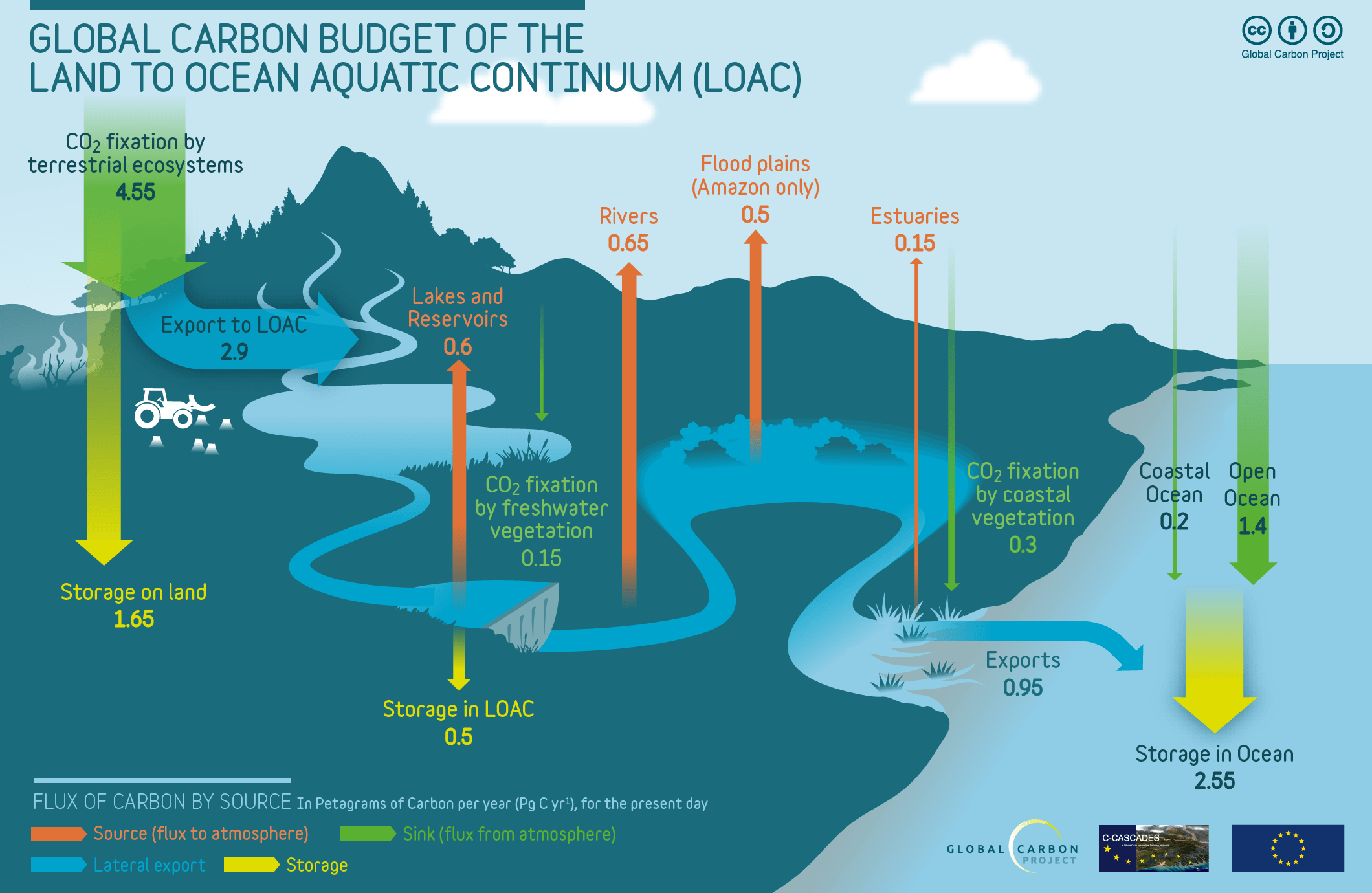We present a new assessment of the global carbon (C) budget for the land to ocean aquatic continuum (LOAC) arising from both natural and human-induced emissions and uptake. The LOAC focuses on the contribution of inland (streams, rivers and floodplains, lakes and reservoirs) and coastal (estuaries, marshs and mangroves, shelves) waters in the global C budget. This assessement is a collaboration between the research institutes in the H2020 C-CASCADES project and the Global Carbon Project.
Data sources: Hastie et al. (2018), Lauerwald et al. (2015), Laruelle et al. (2013), Raymond et al. (2013), and Regnier et al. (2013).
Importance:
The most recent Intergovernmental Panel on Climate Change Assessment Report (5th IPCC AR) includes the transport of C across the LOAC as a key component of the global C cycle. However, large uncertainties remain regarding the quantitative contribution of the LOAC to global CO₂ emissions, and especially regarding its evolution since the Industrial Era as a result of diverse human factors (land-use and climate change, hydraulic management, and agricultural, domestic and industrial activities). Understanding the dynamics of the global LOAC C budget and attributing changes to different sources is fundamental for tracking climate change and mitigation options to avert further global warming.
The LOAC C budget:
Includes leaching of C from terrestrial ecosystems into inland waters, C sequestration along the LOAC, mainly in sediments, re-emission of C back to the atmosphere and export to the open ocean. In particular, the CO₂ flux through the air-water interface is the result of a complex succession of sources and sinks. Ultimately, inland water emissions dominate the overall budget, which are only partly compensated by aquatic plant fixation and coastal ocean uptake. The apportioning of these fluxes between natural and human-induced contributions is not currently very well understood.
Estimating the LOAC C budget:
The LOAC CO₂ budget is estimated in the 5 continents for 3 source categories using “bottom up (BU)” methods. A selected set of country-based emissions is also provided. BU uses diverse data inventories, observation-driven methods and process-based biogeochemistry models.
Future work:
As part of its scientific goals,
the Global Carbon Project team will further develop more complete and better constrained LOAC C budgets and provide regular updates.




